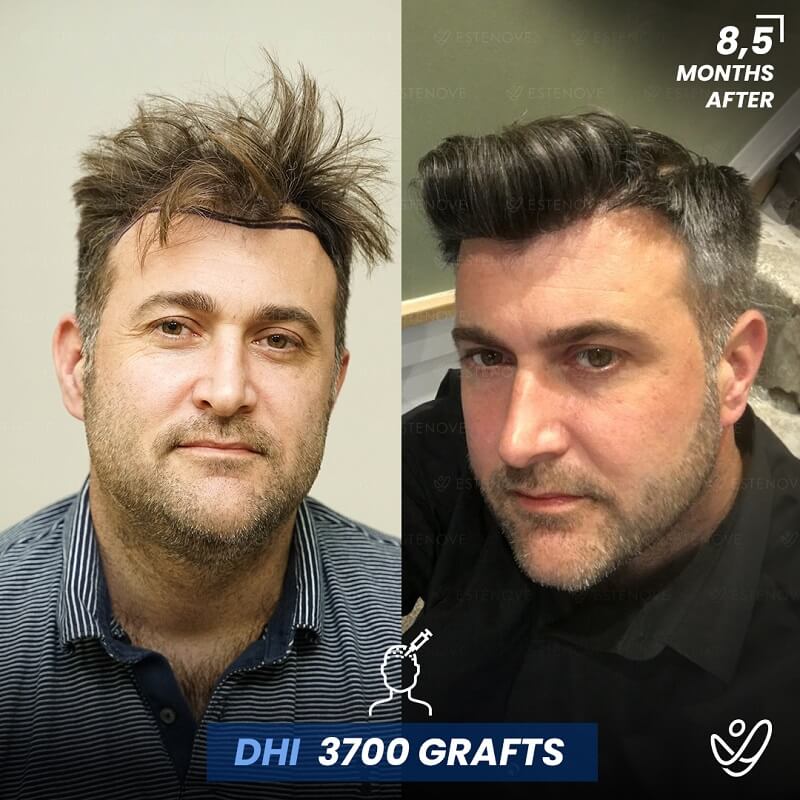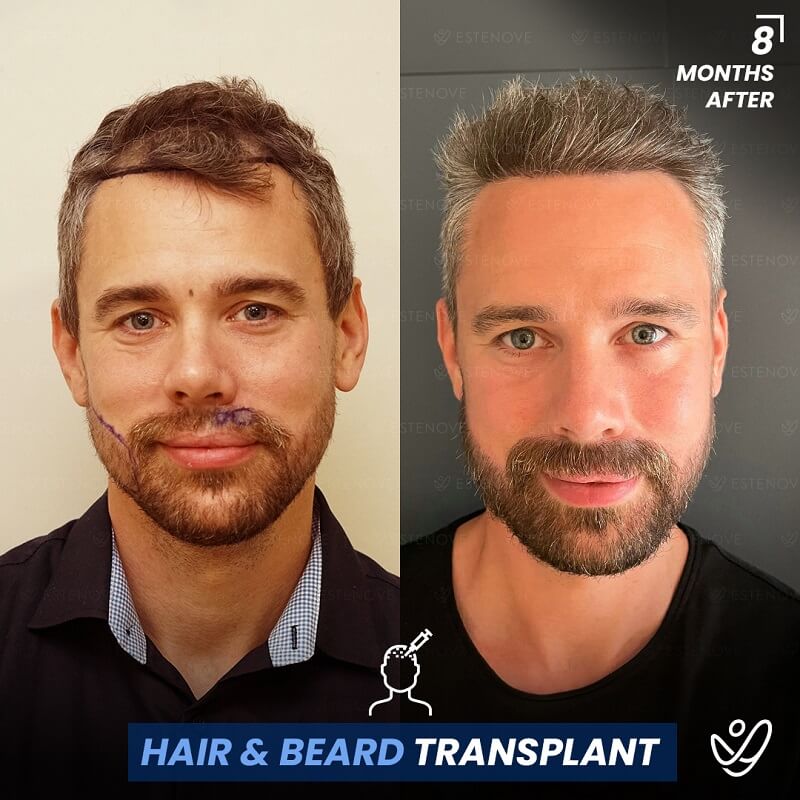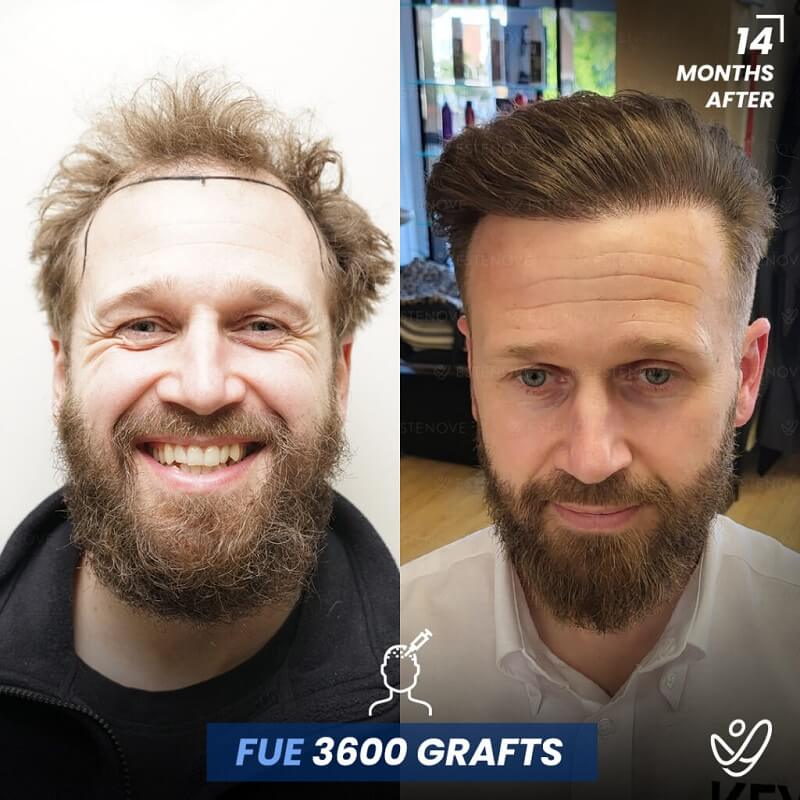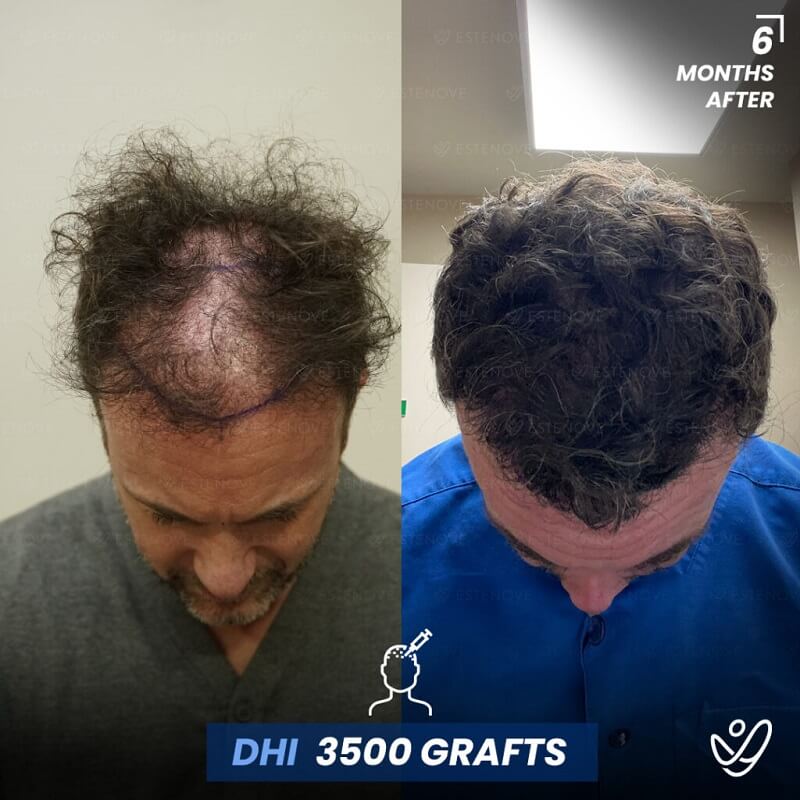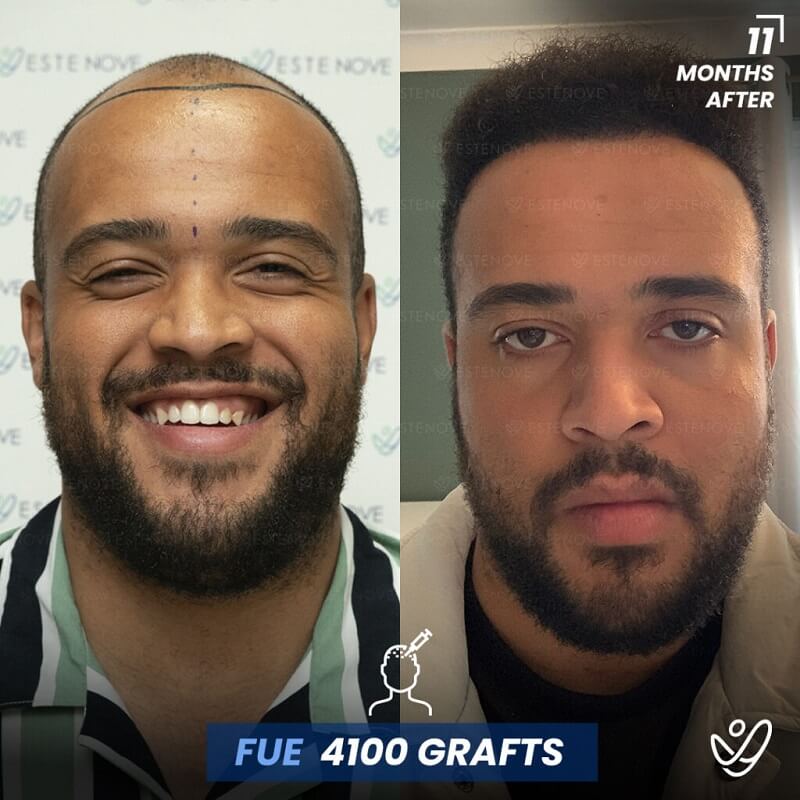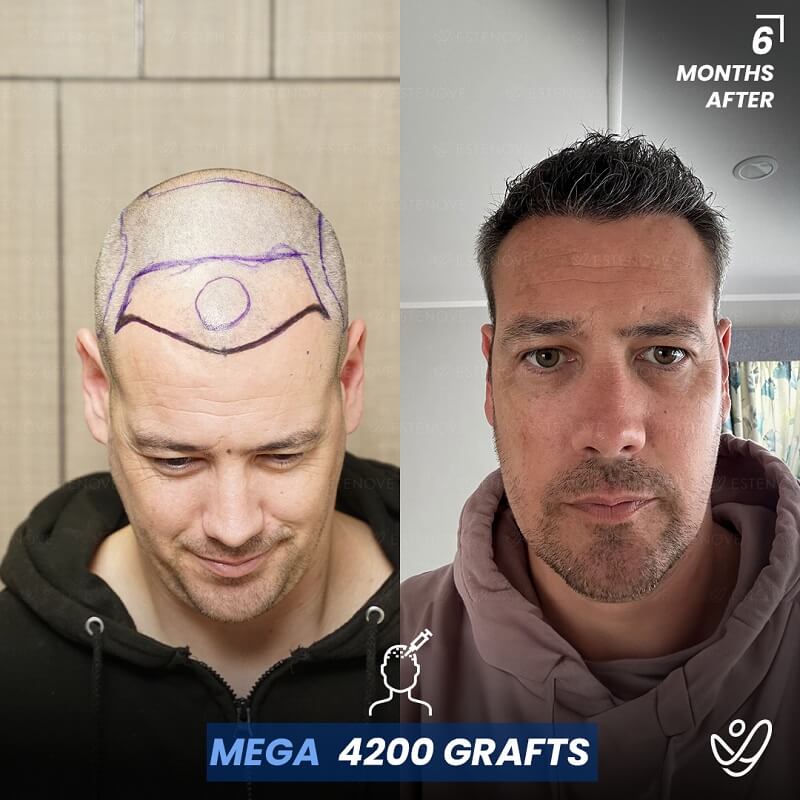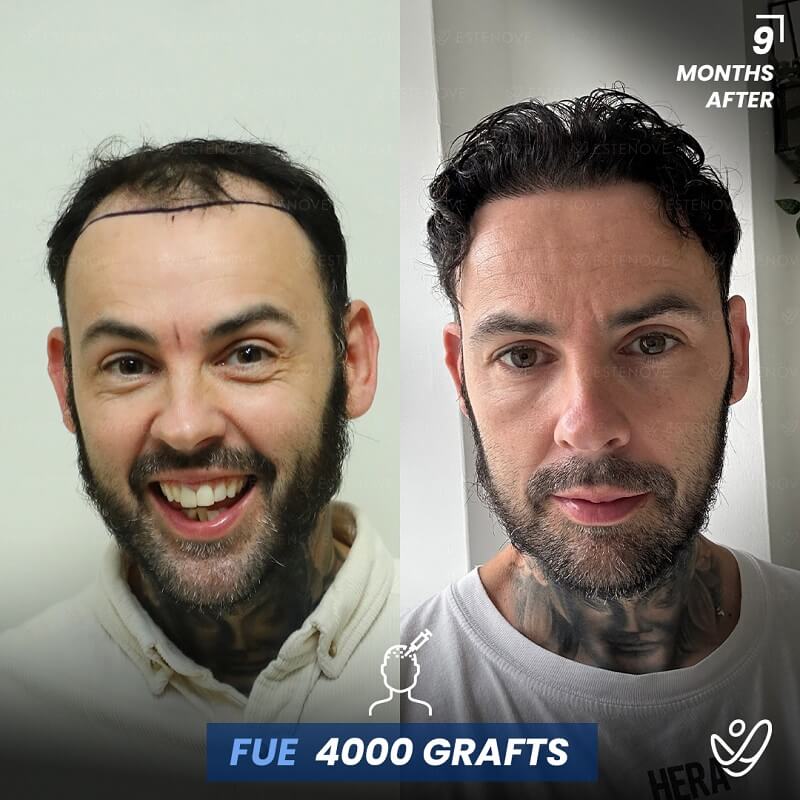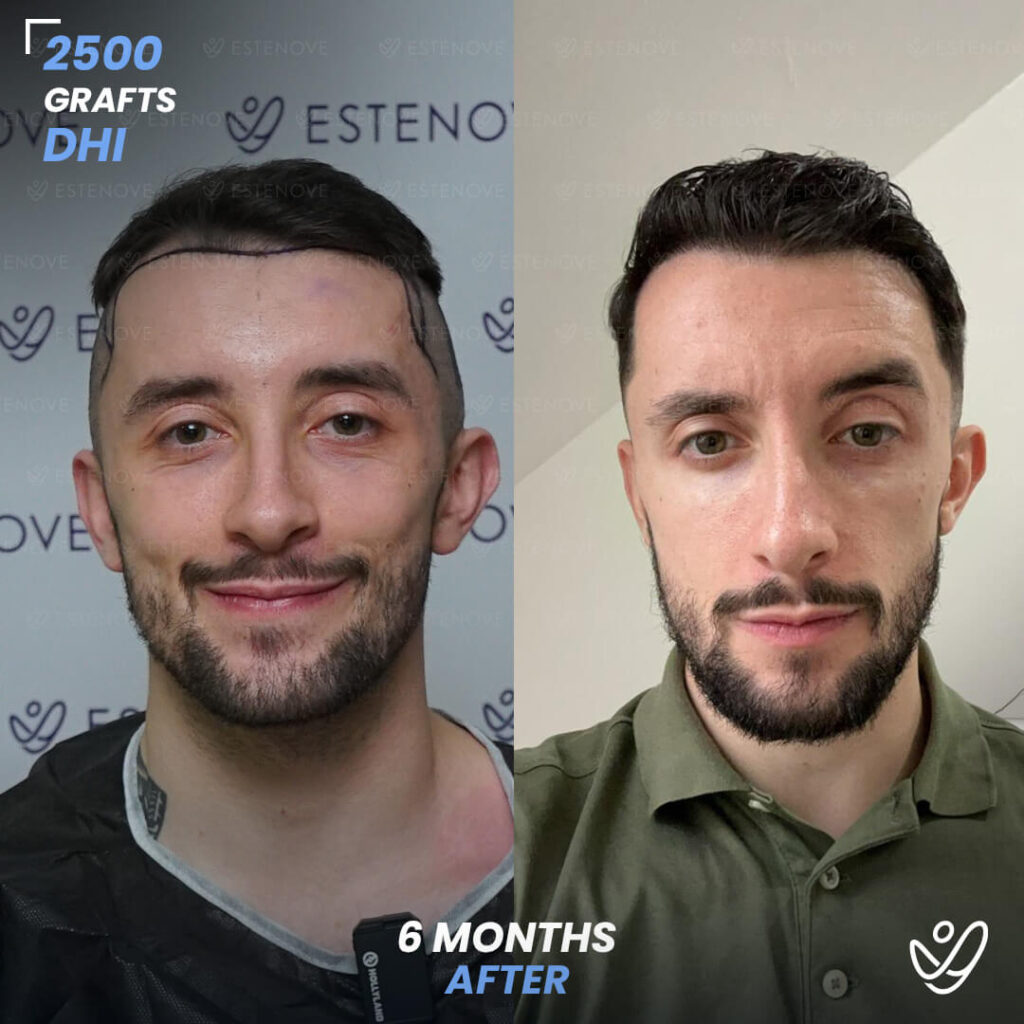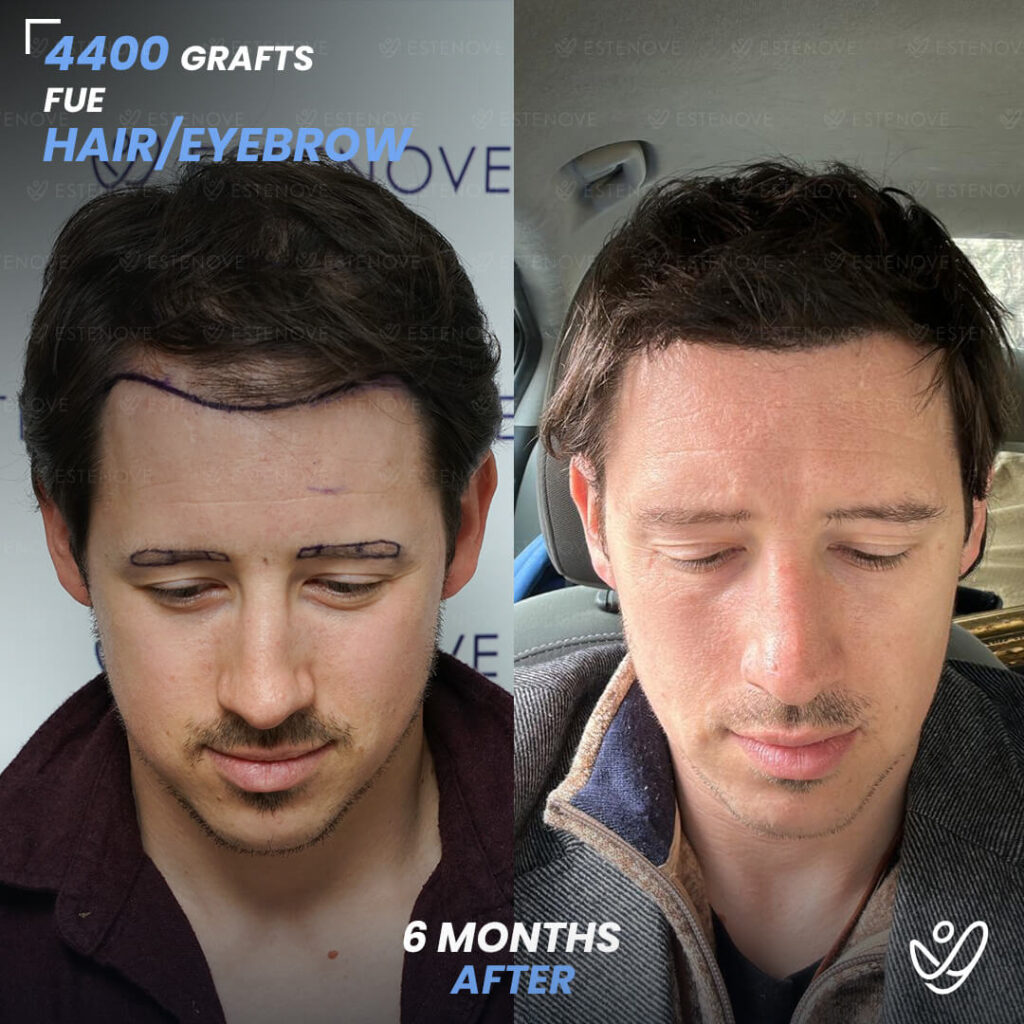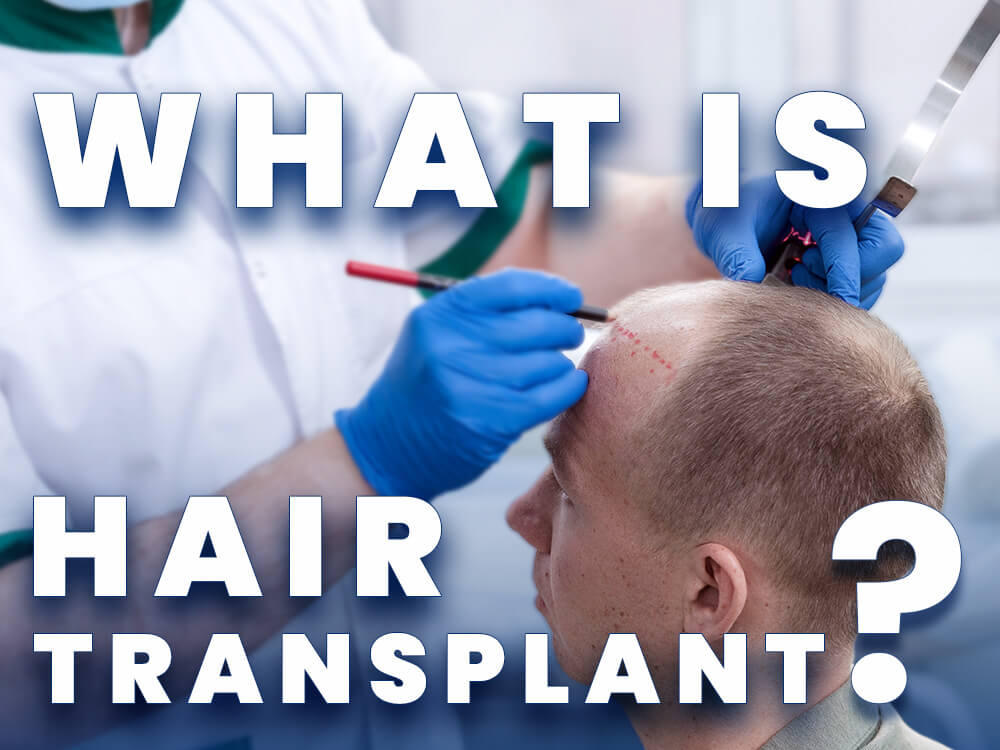
A hair transplant is a surgical procedure aimed at addressing hair loss by relocating hair follicles from a donor site, typically located at the back or sides of the scalp, to areas suffering from thinning or balding. This procedure has gained popularity due to its effectiveness in restoring a fuller head of hair, promoting a more youthful appearance for individuals who experience hair thinning or baldness.
Table of Contents
- Basics of Hair Transplantation
- Types of Hair Transplant Techniques
- Who is a Good Candidate for Hair Transplant Surgery?
- The Hair Transplant Procedure
- Common Myths About Hair Transplants
- The Cost of Hair Transplants
- Recovery and Aftercare Following a Hair Transplant
- Long-Term Results After a Hair Transplant
Basics of Hair Transplantation
The fundamental principle behind hair transplantation lies in the technique of relocating healthy hair follicles to areas where hair is sparse or nonexistent. This transformation exploits the natural regenerative properties of hair. The hair follicles are taken from areas that are genetically resistant to hair loss, ensuring better viability when transplanted.
Hair transplantation can take various forms, depending on the patient’s unique situation. It typically begins with a consultation to assess hair loss patterns, medical history, and personal expectations.
One of the most common techniques used in hair transplantation is Follicular Unit Extraction (FUE), which involves harvesting individual hair follicles directly from the donor site, usually the back or sides of the scalp. This method minimizes scarring and allows for a quicker recovery time compared to older techniques like Follicular Unit Transplantation (FUT), where a strip of scalp is removed. Patients often prefer FUE due to its less invasive nature and the natural appearance of the results. Additionally, advancements in technology have led to the development of robotic-assisted systems that enhance precision during the extraction process, further improving outcomes.
Post-procedure care is crucial for the success of hair transplantation. Patients are typically advised to avoid strenuous activities and direct sun exposure for a few weeks following the surgery. It’s also important to follow a specific hair care regimen to promote healing and support the growth of the newly transplanted hair. Many clinics provide detailed aftercare instructions, including the use of specialized shampoos and topical treatments that can help nourish the scalp and stimulate hair growth. Understanding these aftercare protocols can significantly influence the overall success of the procedure, ensuring that patients achieve the desired fullness and density in their hair restoration journey.
The Different Types of Hair Transplant Techniques
There are primarily three popular techniques used in hair transplantation:
- Follicular Unit Transplantation (FUT): This method involves removing a strip of tissue from the donor area, which is then dissected into individual hair follicles for transplantation. While FUT may result in a linear scar at the donor site, it allows for the transfer of a large number of grafts in a single session. This technique is often favored for patients who require a significant number of grafts, as it can yield a higher density of hair in the recipient area. Additionally, the strip method can be more cost-effective for extensive procedures, making it an appealing option for those with more severe hair loss. However, due to the more invasive nature of this procedure and the visible scarring, it has become less popular with the rise of more advanced techniques like FUE and DHI.
- Follicular Unit Extraction (FUE): In contrast, FUE extracts hair follicles one by one using a specialized punch tool. This technique minimizes scarring and downtime compared to FUT, making it the preferred option for many patients. FUE is particularly advantageous for individuals who prefer to wear their hair short, as it leaves tiny, dot-like scars that are less noticeable than the linear scar associated with FUT. Moreover, FUE can be performed on patients with tighter scalps or those who have previously undergone FUT and are looking for additional coverage.
- Direct Hair Implantation (DHI): DHI is a more advanced and precise technique that involves extracting hair follicles and implanting them directly into the recipient area using a specialized Choi pen. Unlike FUT and FUE, DHI does not require prior incisions or stitches, making it a minimally invasive option. The use of the Choi pen allows for accurate placement of each follicle, which can result in a more natural-looking outcome. DHI is often preferred by patients seeking faster recovery and minimal scarring.
All methods have their advantages and disadvantages. The choice usually depends on the patient’s hair loss severity, donor site availability, and personal preferences. For instance, patients with a higher degree of hair loss may lean towards FUT due to its ability to harvest more grafts in one sitting, while those concerned about visible scarring may opt for FUE or DHI. Additionally, the recovery process varies between the techniques; FUT patients may experience more discomfort and a longer healing time, while FUE and DHI patients often report quicker recovery and a faster return to normal activities.
Beyond these three primary hair transplant techniques, advancements in hair restoration technology have introduced other methods, such as robotic-assisted FUE, which utilizes robotic systems to enhance precision during follicle extraction. This innovation not only improves the accuracy of graft placement but also reduces the risk of damage to surrounding hair follicles. Furthermore, techniques like Platelet-Rich Plasma (PRP) therapy are being integrated into hair transplant procedures to promote healing and stimulate hair growth post-surgery. By harnessing the body’s own healing properties, PRP can enhance the overall results of hair transplantation, making it a popular adjunct therapy among both surgeons and patients alike.
Who is a Good Candidate for Hair Transplant Surgery?
Determining candidacy for hair transplant surgery is a crucial step in the process. Ideal candidates typically exhibit specific characteristics:
- Adults experiencing male or female pattern baldness with sufficient donor hair available.
- Individuals in good overall health without underlying medical conditions that could impact healing or hair growth.
- Patients who have realistic expectations about the outcomes of the procedure.
Conversely, those with certain medical conditions, such as active scalp infections, or those who have extreme forms of hair loss may not benefit from a hair transplant. It is essential to consult with a qualified physician to discuss these factors.
In addition to the physical criteria, psychological readiness plays a significant role in determining candidacy. Candidates should possess a positive mindset and be prepared for the emotional journey that accompanies the surgery. This includes understanding the recovery process, which may involve some discomfort and a temporary shedding of transplanted hair before new growth begins. The psychological aspect is often overlooked, yet it is vital for ensuring that patients are not only physically but also mentally prepared for the changes that will occur.
Furthermore, age can also influence candidacy. While there is no strict age limit, younger individuals may not be ideal candidates if their hair loss is still progressing. Surgeons often prefer to wait until a patient is in their mid-20s or older, allowing for a more stable pattern of hair loss to be established. This helps in planning the transplant more effectively, ensuring that the results are not only immediate but also sustainable over time. Engaging in a thorough consultation with a hair restoration specialist can provide valuable insights into the timing and suitability of the procedure for each individual.
The Hair Transplant Procedure: What to Expect
The hair transplant procedure typically occurs in an outpatient setting. Here’s what patients can expect:
- Consultation: A thorough examination is performed by the surgeon, followed by a discussion about goals and expectations.
- Preparation: On the day of surgery, the donor area is prepared, and local anesthesia is administered to ensure comfort.
- Extraction: Depending on the chosen method (DHI or FUE), hair grafts are harvested for transplantation.
- Placement: The harvested grafts are meticulously inserted into the balding areas, taking care to follow natural hair growth patterns for the best aesthetic results.
Hair transplant procedure can take several hours, depending on the number of grafts being transplanted. Post-surgery, patients typically receive specific instructions for care and medication to aid in recovery.

Calculate the number of grafts needed for your hair transplant and get an estimated cost for various destinations
Common Myths About Hair Transplants
Despite the increasing acceptance of hair transplantation, several myths still circulate that can mislead potential candidates. Here are some common misconceptions:
- Hair transplants are only for men: Hair loss affects both men and women; however, the eligibility and techniques may differ between genders.
- Results are immediate: Many expect to see full results right after the procedure, but noticeable growth generally occurs about six months post-surgery.
- It’s a painful procedure: Modern hair transplant techniques utilize local anesthesia, minimizing discomfort during the procedure.
Addressing these myths with accurate information is crucial in making an informed decision about hair transplants.
The Cost of Hair Transplants: What You Need to Know
The cost of a hair transplant varies widely based on factors such as technique, the extent of hair loss, the number of grafts needed, and geographical location. On average, patients can expect to pay between $3,000 and $15,000 for the procedure.
| Country | FUE Cost | DHI Cost |
|---|---|---|
| Estenove / Turkey | $3,750.00 | $3,750.00 |
| Turkey | $2,800.00 | $4,500.00 |
| Mexico | $4,000.00 | $5,000.00 |
| Thailand | $4,500.00 | $5,500.00 |
| Poland | $6,000.00 | $6,500.00 |
| Korea | $6,000.00 | $6,800.00 |
| Brazil | $6,000.00 | $8,000.00 |
| UK | $9,500.00 | $8,000.00 |
| Ireland | $9,500.00 | $8,000.00 |
| Australia | $9,500.00 | $10,500.00 |
| New Zealand | $9,500.00 | $10,500.00 |
| Germany | $10,000.00 | $11,500.00 |
| USA | $14,000.00 | $12,000.00 |
| Canada | $14,500.00 | $12,500.00 |
| France | $16,000.00 | $19,000.00 |
| Duration | 2-8 Hours | 5-9 Hours |
| *The costs provided are average estimates for 4,000 grafts. Get more detailed info at Hair Transplant Cost in Turkey. | ||
It is also essential to consider that many clinics offer financing options, making it more accessible for individuals to pursue this treatment. When evaluating costs, patients should also inquire about what is included in the price, such as consultations, follow-up visits, and post-operative care.
Hair Transplant Packages
Do I have to pay per graft at Estenove?
No, at Estenove, you receive the maximum number of grafts necessary for your procedure at a fixed price, ensuring the best possible results without extra costs.
How long do I need to stay in Turkey for my hair transplant?
The required stay depends on your location, and accommodation is provided by Estenove:
- USA, Canada, Australia – 3 nights stay
- UK, Europe – 2 nights stay
What aftercare support is provided?
You’ll receive an aftercare kit with essential products and up to 18 months of WhatsApp support from specialists. Kit includes shampoo, conditioner, vitamins, optional finasteride, painkillers, and a neck pillow.
Recovery and Aftercare Following a Hair Transplant
Recovery from a hair transplant varies from person to person. However, the following general guidelines apply:
- Rest is essential; patients should plan for someone to assist them during the initial recovery days.
- It’s crucial to avoid strenuous activities and sun exposure for at least a week following the procedure to ensure proper healing.
- Patients should follow their surgeon’s aftercare instructions meticulously, including how to clean the scalp and when to resume regular hair care.
It’s common for transplanted hair to shed within the first few weeks post-surgery, but this is temporary. Resilient hair growth typically appears within 3 to 6 months, with full results often visible after a year.
Long-Term Results: What to Expect After a Hair Transplant
One of the most appealing aspects of hair transplantation is its potential for long-term results. Once fully healed, transplanted hair tends to grow and behave like natural hair, often lasting a lifetime; however, it’s crucial to manage expectations regarding thickness and coverage.
Some patients may consider additional procedures down the line to maintain their appearance as they age. Regular follow-ups with a healthcare provider can help monitor hair density and overall scalp health.
Overall, hair transplantation has transformed lives by restoring confidence and self-esteem for those struggling with hair loss. With advancements in techniques and growing awareness, it remains a viable option for many seeking to address their hair loss concerns.
At Estenove, we don’t charge per graft, instead you’ll receive the maximum number of grafts necessary for your treatment for a fixed $3,750. Contact us to get your free hair analysis.

